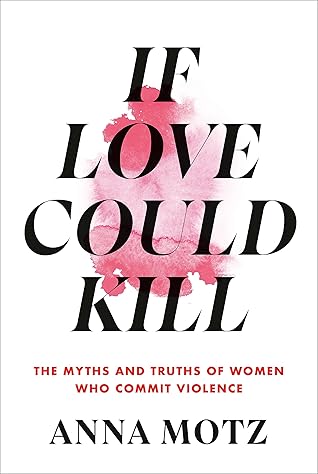Kindle Notes & Highlights
by
Anna Motz
Read between
March 15 - April 3, 2024
They were monsters, angels of death, manifestations of pure evil: made into demons who could be kept at a safe distance from the ideals they threatened.
society has no villain like a woman who kills.
To look away from violent women is also to look away from the abuse of women and girls, and the harmful attitudes of a society that wishes either to patronize women as helpless victims or to condemn them as heartless monsters.
Setting fires can be a means of expression for those who feel they have no alternative. Requiring no physical strength, it is a form of violence that both is accessible and can appear to hold the promise of purification: a desperate attempt by people who have suffered appalling abuse to not only communicate their repressed anger but destroy the evidence of their own pain.
It was, without any words needing to be spoken, a scalding act of truth telling.
Self-harm of this degree is characteristic of protest, an act that is both a private expression of deeply held emotions and a public display of despair and alienation.
prisons are not simply detainment centers for those being punished by the law but often the only secure places for people who find themselves unwanted and uncared for anywhere else in society.
It was a reminder of the fragile humanity that pervades an environment and a workplace in which everyone is wearing a uniform of one sort or another and projecting a defiant face to the world.
the female forensic patients, though in the minority and generally not a risk to others, were considered “harder work” than the men, emotionally more draining than the vast majority of our referrals—men with long histories of violent crime.
This subverts the traditional notion of the male as the abuser and can appear more shocking because it threatens stereotypical ideas about women as victims.
Violence becomes the last resort for pain that can find no other outlet.
If all badness exists outside us, the world is terrifying; if it is located inside us, we hate ourselves.
Assessing the capacity of mothers to care for their children without falling prey to tropes about motherhood is a constant challenge,
it is important not to attach certainty to matters that are by their nature unpredictable.
We do not acknowledge the full extent of maternal violence against children, because it is countercultural: too challenging to our preconceptions of family and motherhood, and too threatening to that “comfortable distance” we wish to maintain between ourselves and the possibility of serious violence.
Women are seen through a distorting lens—judged not as the parents that they actually are but as the mothers that society either wishes or believes them to be.
recovery meant not elimination of the pain, trauma, and emotions that occupied her but control over them: an ability to recognize overwhelming feelings, work through them, and form them into a manageable shape.
In the United States women who commit violent crimes receive extreme punishments, and women of color are disproportionately sentenced to extreme punishment compared to white women. At the present time, fifty-two women sit on death row. Additionally, the United States has one of the highest rates of incarceration in the world.
Although it is certainly the case that women as well as men can be violent without cause, my career has shown me that female violence is very often the product of suffering that needs to be understood before a criminal act can be explained and any future risk reduced.
As such, most of the crimes I encounter tell a story about what it means to live as a girl and a woman: in childhood and adolescence, as intimate partners, as daughters, and as mothers.
No violent woman I have known came from nowhere: she was the product of a society that fails women too readily, enables their abusers too frequently, and condemns those who violate its stereotype of womanhood too impulsively.
If we as a society open our eyes to the realities of mental illness, maternal despair, and aggression, and the ways in which women and girls may be groomed and abused before becoming perpetrators themselves, we will better prepare those working in the health-care, education, social services, and justice systems to identify individuals at risk.


